#vogue ball
Text
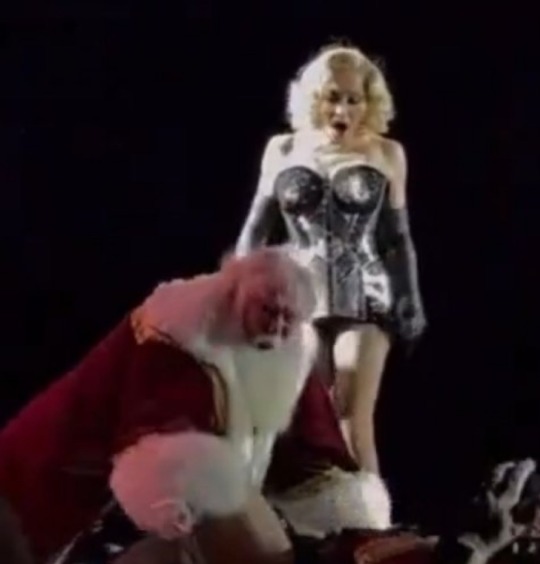
Santa Baby…🎅🏻
#Madonna#2023#Celebration Tour#Washington DC#Santa Claus#Madonna 2023#Vogue Ball#Santa#Queen Of Pop#The Celebration Tour
17 notes
·
View notes
Text
one of her many talents...
1 note
·
View note
Text

Pier Angeli at the Franco-American ball at Waldorf Astoria in New York.
Photographer: Nick De Morgoli
Vogue, July 1st, 1954
#ball#Waldorf Astoria#new york#fashion#photography#portrait#black and white#vogue#magazine#fashion history#pier angeli
800 notes
·
View notes
Text
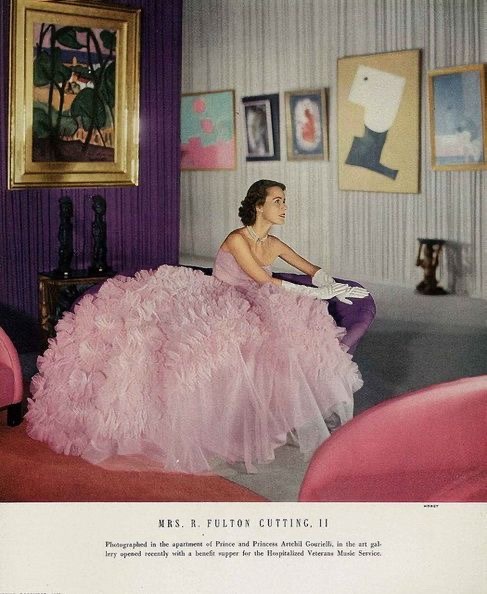
Vintage Vogue 1950 ✨Photograph by Horst P. Horst ✨Mrs Fulton Cutting ll ✨Ceil Chapman Pink Tulle Ball Gown
#vintage fashion#shop vintage#vintage#love vintage#vintage vogue#horst p. horst#vintage fashion photography#ball gown#tulle#ceil chapman#1950s fashion#midcentury#artwork#pink gown#pink dress
54 notes
·
View notes
Text

#met gala#met ball#met 2023#fashion#meryl streep#iconic#devil wears prada#prada#runway#met gala 2023#vogue#anna wintour
230 notes
·
View notes
Text

US Vogue November 1, 1951
Sunny Harnett in a little black tuller silk taffeta ball gown. Long basque bodice belted at the waist; the skirt a shower of flat pleats. By Larry Aldrich. Tabarin stockings in “Sonyette” color. Faille bag by Virginia Art. Rhinestone choker necklace by Marvella.
Sunny Harnett dans une petite robe de bal noire en taffetas de soie Tuller. Long corsage basque ceinturé à la taille ; la jupe une pluie de plis plats. Par Larry Aldrich. Bas Tabarin teinte "Sonyette". Sac en faille par Virginia Art. Collier ras de cou en strass par Marvella.
Photo Frances McLaughlin Gill
vogue archive
#us vogue#november 1951#fashion 50s#1951-52#fall/winter#automne/hiver#larry aldrich#sunny harnett#frances mclaughlin gill#tabarin#sonyette#virginia art#marvella#ball gown#robe de bal#little black dress#petite robe noire#taffeta#taffetas
83 notes
·
View notes
Text
CARMY WAS PROUD OF SYDNEY: THE BELLE OF THE BALL
British Vogue called Sydney, The Belle Of The Ball.

CARMY wasn't surprised that everyone loved her.
He continued to read
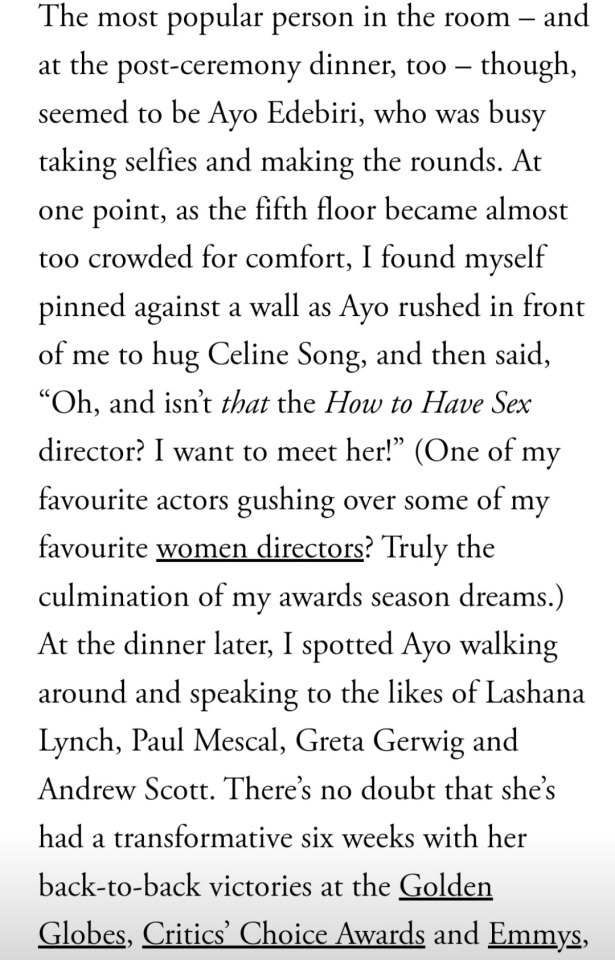
Then came the picture.
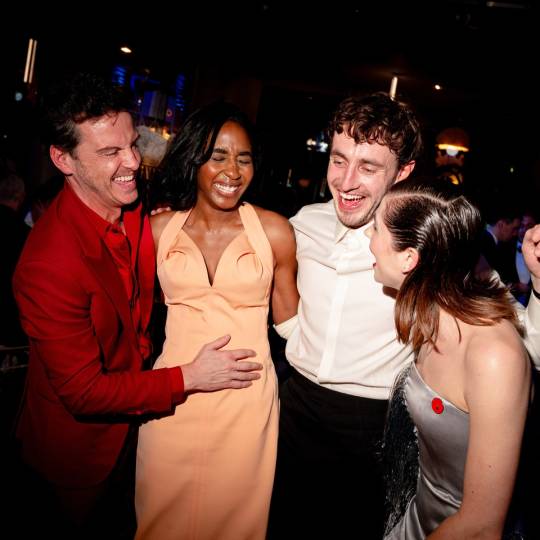
CARMY was proud of Sydney and heated at the same time.
Her exes just couldn't stay away or keep their hands to themselves.
Sydney wasn't exactly shooing them away either.
He made up his mind to be more forthcoming with his feelings towards her.
#british vogue#vogue#ayo edebiri#baftas#jeremy allen white#richie jerimovich#the bear#carmy berzatto#sydney adamu#carmy x syd#love#sydcarmy#slow burn#romance#relationship#carmy x claire#the belle of the ball#the bear fx#golden globes#critics choice awards#emmy awards#jayo
51 notes
·
View notes
Text

boy if you don't stop lurking on queer twitter 👀👀😆
#ˡᵒʷᵏᵉʸ ᵗʰⁱⁿᵏ ʰᵉ'ˢ ᵐᵃᵏⁱⁿᵍ ᶠᵘⁿ ᵒᶠ ʲᵃᶜᵒᵇ'ˢ ᵠᵘᵉᵉʳⁿᵉˢˢ ᵇᵘᵗ ˡᵉᵗ'ˢ ᵖᵃʳᵏ ᵗʰᵃᵗ ᶠᵒʳ ⁿᵒʷ#barry keoghan#jacob elordi#saltburn#saltburn 2023#voguing#vogue balls#queer#lgbt#instagram#twitter#step up#step up film franchise
41 notes
·
View notes
Text
Halle Bailey arriving to 2023 Met Gala. Looking STUNNING!!!!
#halle bailey#sivcontributor#vogue#the met gala#met ball#karl lagerfeld#metropolitan museum of art#new york city#the little mermaid#disney princess
107 notes
·
View notes
Text

Caroline Trentini by Tim Walker, Vogue Italia (May 2006) - A Play Of White
#Caroline Trentini#photography#fashion photography#fashion#fashion editorial#vogue#tim walker#disco ball#style
65 notes
·
View notes
Text

Soccer player Cho Gue Sung on the cover of Vogue Korea Jan 2023
#asian hunk#hot asian men#hunkoftheday#asianmuscle#muscular#handsome#hottie#asian#woof#hot shirtless asian#magazine cover#cover boy#male model#cho gue sung#soccer#soccer player#soccer ball#vogue korea#vogue#vogue magazine
52 notes
·
View notes
Text
Paris is Burning: the Fabulous and the Ugly of Queer POCs in the Shadow of NYC
"Ball is like crossing into the looking glass, a wonderland. You go in there and you feel 100% right of being gay."

Directed by Jennie Livingston in 1990, Paris is Burning follows the Ballroom culture that originated in NYC, an underground LGBTQ+ subculture, where African-American, Latino gay men, and transgender folks "walk" in drag and attend performance competitions to win cash prizes and trophies in categories like “Face,” “Femme Queen Realness,” and "Voguing." In the 1980s of New York City, queer POCs were extremely ostracized due to their sexuality and race, they struggled in the dark ghetto of this metropolitan area, while the Ballroom community offered them a shelter to be their authentic selves. Most participants of Ballroom belong to groups known as "houses." Folks could choose their own "mother" and siblings who accept them and love them, for being gay. What's more, Voguing became queer POCs' distinct way of self-expression. Dancers act in different poses, with an emphasis on the movements of arms and body, just like the model on the cover page of the magazine Vogue. And it is all about confidence and self-love. In this sense, Ballroom became an identity celebration of the oppressed, the exiled, and the outcast, where queer folks of color find status, acceptance, and worth.

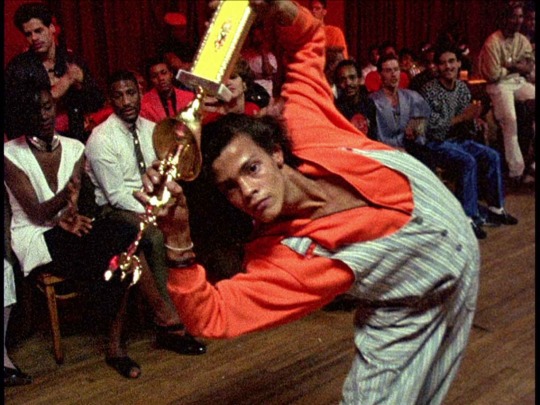
Regarding the documentary itself, I argue that Paris is Burning breaks into the mainstream media with its groundbreaking representation of black gays and trans people of color and its disclosure of the intersectional oppressions faced by queer POCs; however, the representation of "performance competitions" is still constrained in the frame of gender performativity, and the production of it is criticized as an appropriation of Ballroom culture by a privileged white filmmaker.
Here is a trailer to have an overview of this documentary.
youtube
Part 1: About Intersectionality
The biggest message Paris is Burning brings to the table is intersectionality, where it captures black gays and trans people of color as well as their subculture. Queer theory actively acknowledges the importance of queer of color critiques. That is, oppression on various aspects of identity intertwines and compounds together, such as sexuality, gender, race, age, class, and ableness. And each oppressive institution (racism, sexism, homophobia, transphobia, etc.) cannot be examined separately from one another. Queer folks of color are being ostracized and marginalized not only within larger society but also in the queer community, meaning that they face multiple oppressions. And it is true. A gay man of color in the documentary said, "I remember my dad used to say, 'you have three strikes against you in the world. You are black, a male, and you are gay; you are going to have a hard fuckin' time.'"
Tracing back the history of Ballroom culture, we also see the significance of intersectionality through its origin. Black and Latino drag queens used to experience racism in established drag queen pageant circuits. Although participants were racially integrated, the judges were almost all white. Since then, drag queens of color have begun to organize their own pageants, the Ball. In that case, Ball culture becomes a retrospective symbol of the era when queer people of color underwent discrimination from multiple sources.
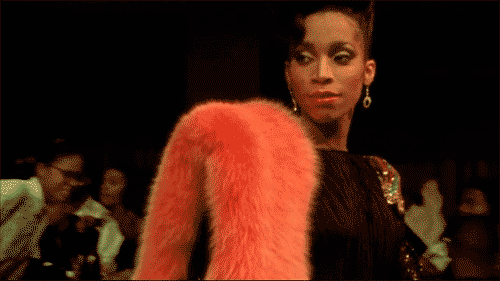
Venus Xtravaganza, a trans woman in the documentary, whose murder reveals the very dark and brutal side of intersectional oppression. Venus, an Italian-American, was saving up money for gender confirmation surgery while earning a living as a sex worker after she was excluded by her family. However, her dead body was found at a hotel on Christmas Day, 1988, during the documentary's shooting. But her killer was never found. In the documentary, she described the experience of being attacked by a man who discovered she was transgender during an intimate encounter. Hence, Xtravaganza's trans identity, multiraciality, homelessness, hustling, poor access to health care, and AIDS — all these aspects layered together contributed to the tragic end of this beautiful life.
Below is a clip about the self-narrative by Venus Xtravaganza.

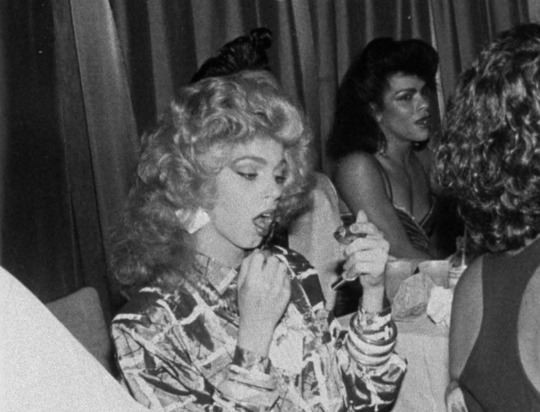
youtube
“The most profound and potentially the most radical politics come directly out of our own identity, as opposed to working to end somebody else's oppression" (Collective, 1983, p. 210). In other words, coping with oppression is inherently associated with identity politics, a deconstruction of identity and labels. What queer folks of color need are to be recognized as normal, equal, lively human beings.
Part 2: About Gender Performativity
It is undeniable that Paris is Burning is a milestone in portraying queer POCs, however, there are still some controversies. Firstly, the representation of "performance competition" still conforms to the tenet of gender performativity. To articulate that, we need to know the basic rules of competition in a given ball first. There are various "categories," or themes, for each competition, such as "Military," "School," "Executive Realness," "Butch Queen's First Time in Drag at a Ball," etc. And participants need to dress according to the guidelines of each category; for example, they wear “yacht wear," military garb, the outfits of private school kids, business attire, and extravagant dress to adhere to the rules.
Here is a clip from the documentary explaining "Categories."
youtube
Overall, we can see these queer POCs parody their heterosexual counterparts. It seems effortless for them to perform high femininity or masculinity in a world of heterosexual folks. However, these "categories" also signify that they are still in a dichotomous system and perform binary genders.
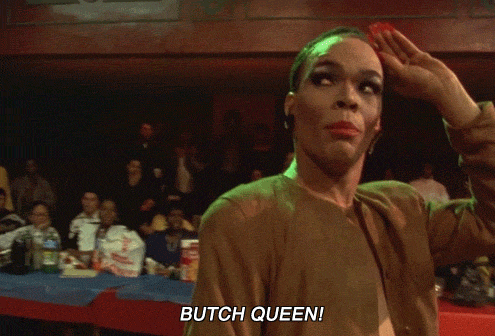

Another category called "high fashion evening wear" required participants to dress and act as an elegant, beautiful young lady wearing an evening dress. Every participant was strictly required to have a purse. "An evening bag is a must, you have to carry something; no lady is sure at night." This kind of "norm" reminds me of the gender performativity theory by Judith Butler: gender is not something we are but something we do. However, due to the reliance on norms, we "do" genders through imitative performance, ultimately leading to extended repetition. In other words, we have no authentic gender.
The voiceover of the documentary said, "The more natural you are, the more credit your outfit is given." "Give people a sense that they are not gay, like a real woman or a real man." However, what is "natural" and what is "real"? What is even a category? As Judith Butler has argued, "we cannot necessarily assume that binary biological sex everywhere provides the universal basis for the cultural categories ‘male’ and ‘female’. If gender constructs are culturally variable, then so are the categories of sexual difference" (cited in Andresson, 2002, p. 6).

Being different is not a flaw, which is the spirit of the queer community. Unfortunately, the documentary did not highlight how queer people of color get rid of the constraints of the binary system or how they go against the mainstream, which makes it less queer.
Part 3: About the Production
Much of the controversy surrounding Paris is Burning has also centered on the perceived appropriation of a black gay subculture by a privileged white queer filmmaker for profits. Jennie Livingston is an American director. She graduated from Yale University in 1983, where she studied photography, drawing, and painting with a minor in English literature. "Whiteness" and the social status of an "ivy student" are critical privileges for Livingston. What's more, she identified herself as a lesbian. It seems Linviston's queerness helps her to enter the industry and tell stories about black gays and trans people of color even though she is not a part of the Ball community.

It is not surprising that the filmmaker's white view leads to stereotypical depictions of black folks in the documentary. For example, the "Banjee" competition features impersonations of the gum-chewing, round-the-way sexy girl on welfare or the crackhead gangbanger on the block. Besides that, Dorian Corey, an experienced drag queen, said in the documentary: "Black stars are stigmatized. Nobody want to look like Lena Horn, everybody wanted to look like Marilyn Monroe." This scene amplifies the drag queen's self-hatred, solidifying the admiration for whiteness among drags. But this kind of representation is biased.
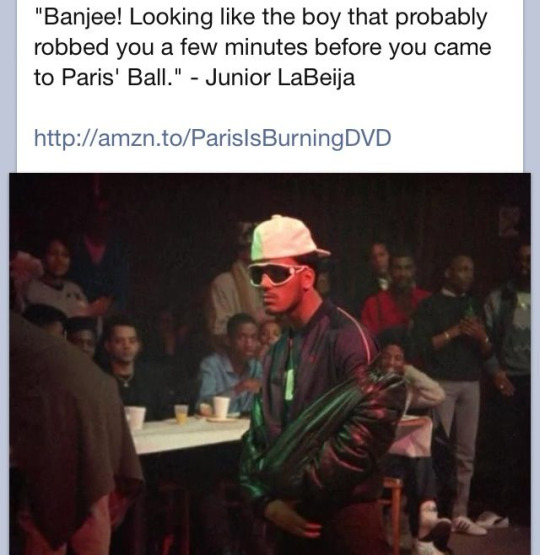
"Too often, people with resources who already have a platform become the ones to tell the stories of those at the margins rather than people who themselves belong to these communities" (Tourmaline, 2017). We need to strive for a time when queer people of color have the opportunity and capital to shoot their own stories. “Power struggles over control of one’s image and access to the tools of media production were, and still are, crucial in communities of color” (Parkerson, 2020). Although the show Pose has made some breakthroughs by hiring trans characters and trans writers, it is hard to make any substantial change in this inherently racist, heterosexual, white male-dominant industry.

Moreover, the film made 4 million dollars, yet only $55,000 was distributed among the 13 performers. Performers felt cheated and were not satisfied with their representation in the documentary. In 2014, when the documentary was to be screened at a public event hosted by Celebrate Brookly! / BRIC, a protest was raised. In such circumstances, Livingston would apologize for the cultural appropriation to her own advantage.
Here is a clip showing the life of performers after the Paris is Burning.
youtube
Final Thoughts
"Good or bad, Paris is Burning is a milestone in the gay community."
Considering my own subject positionality, as a straight, cisgender woman of color from China, I have to say that watching Paris is Burning is definitely a fascinating and eye-opening experience. Regardless of some of its biased representation, this documentary makes me take a glimpse of the Ballroom culture in NYC which has extended globally and influenced a lot of Chinese queer folks in recent years. I also get to know some drag queen shows becoming popular in underground clubs located in Shanghai and Beijing.
Meanwhile, I deeply resonate with this group of outcast New Yorkers, for whom racism, poverty, and homophobia are too real, too tough, while they create a world of sustenance and belongingness by themselves. It is all about the power they give to themselves. In the name of glory and pride, they dance, scream, suffer, survive, and most importantly, be themselves here. Ballroom culture makes them not stay in the shadow of NYC, but throw the shadow on those who demean them. All in all, Paris is Burning is the "fire this time."
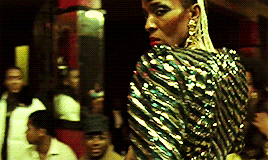
References:
Andersson, Y (2002). “Queer Media?: Or; What Has Queer Theory to do with Media Studies?” IAMCR, 1-10.
Collective, C. R. (1983). The Combahee river collective statement. Home girls: A Black feminist anthology, 1, 264-274.
Martin, A. L. (2018, August 2nd). Pose(r): Ryan Murphy, Trans and Queer of Color Labor, and the Politics of Representation. LA Review of Books. https://lareviewofbooks.org/article/poser-ryan-murphy-trans-queer-color-labor-politics-representation/
Parkerson, M. (2020, February 25th). Paris Is Burning: The Fire This Time. The Criteron Collection. https://www.criterion.com/current/posts/6832-paris-is-burning-the-fire-this-time
By Selene
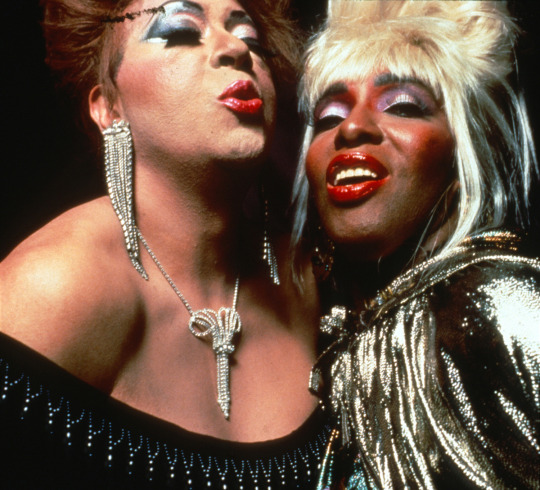
#queer media#queer film#queer studies#paris is burning#ballroom#nyc#voguing#documentary#lgbtq#lgbtq+#drag queen#Youtube#ball culture#drag#transgender#gay rights#gay movement#intersectionality#gay movie#movie review
128 notes
·
View notes
Text

US Vogue November 1, 1951
Jean Patchett wears a ball gown by Charles James, white evening collection. The bodice is a long curvature stem of black velvet above petals of black satin, above that, 25 yards of puffy, puffy white taffeta.
Jean Patchett porte une robe de bal signée Charles James, collection de soirée blanche. Le corsage est une longue courbure tige de velours noir au-dessus des pétales de satin noir, au-dessus, 25 mètres de taffetas blanc gonflé et gonflé.
Photo Horst P. Horst
vogue archive
#us vogue#november 1951#fashion 50s#1951-52#fall/winter#automne/hiver#haute couture#american style#american designer#charles james#made to order#jean patchett#horst p. horst#ball gown#robe de bal#taffeta#taffetas
63 notes
·
View notes
Photo
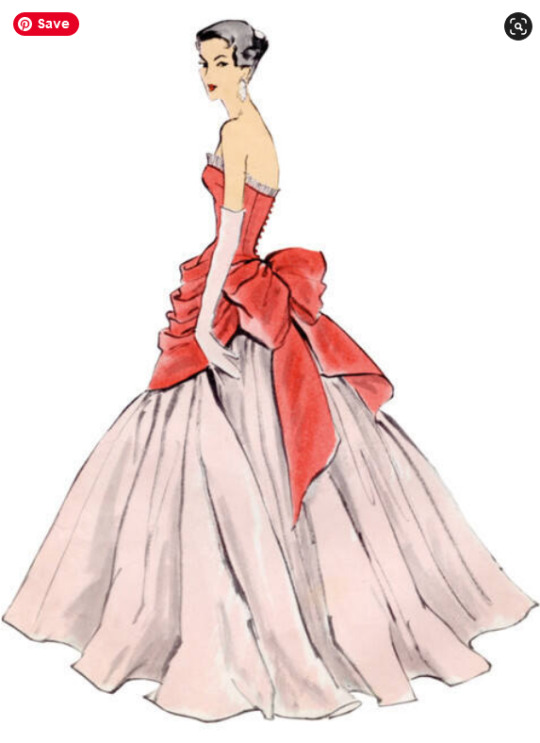


A Fairy Princess Dress: Vogue 1931
This re-issued pattern from 1957 will make you wish you had a ball to attend. It has an enormous skirt, which really needs a stiff petticoat to make the most of it, and comes with two strapless bodice options. One, has decorative lacing down the front and is attached to the skirt. The other one, the fairy princess one, has a separate “overbodice” as they call it, which goes over the dress and which has a pleated frill added along the top edge, a draped apron below (although they call it a pannier,” French for basket) and then a great, big bow at the back which closes with 10 buttons.
The late 1950s was the era of the hour-glass silhouette, and while romantic looks in evening dresses had been popular since the late 1940s, and was clearly the selling point here, notice how spare the grey version was, a sign of change to come. The dress requires over 10 yards of fabric at 60″ wide for the dress itself (it is mostly the skirt) and the additional overbodice takes up around 3 yards.
Quite something. In fact, I am pretty sure you can’t even put it on by yourself in the bowed version. As to the making, remember that strapless dresses are built from the waist upwards. The boning which is inserted within the lining is what defies gravity for you, and you should definitely muslin the bodice to make sure it fits nicely. I don’t see any indication in the description, but most strapless dresses also benefit from an inner belt which helps hold the shape of the dress in and up as well.
The fabrics recommended are ones to make you sigh: silk organdie, taffeta, moire, faille, chiffon and crepe, as well as barathea which is a silk/cotton birds-eye weave with one fabric as the warp and one as the weft. No, I have never seen one either. Notice some are crispy, and some very soft and drapey, so first decide how big you want to appear and whether you want to add that petticoat. and then pick your fabric. If you compare the width of the skirts in the illustrations v. those in the line drawings and you see what a petticoat would do.
You can find it at your local fabric store or here online: https://somethingdelightful.com/vogue-patterns/v1931
#vogue patterns#vogue 1931#vintage sewing#vintage dressmaking#vintage sewing pattern#vintage fashion#1950s fashion#vintage evening dress#evening dress#ball gown#draped dress#costume history#dress history#fashion history#sewing pattern#making#dressmaking#sewing#vintage ball gown#vintage evening gown
113 notes
·
View notes
Text
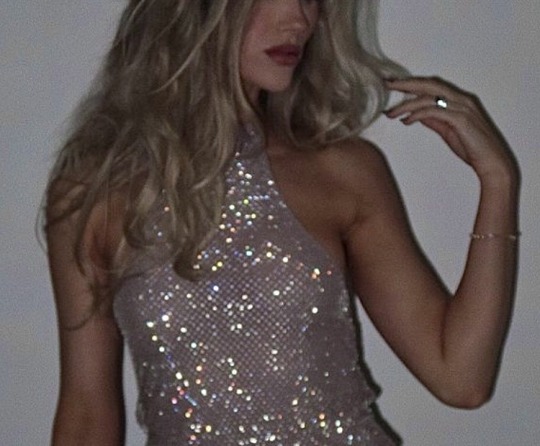
#fashion#aesthetic#luxury#vogue#style#ootd#glitter#makeup#blondie#old money#vintage#grunge#coquette#dark coquette#disco balls#city night#night out#festive season#christmas#thanksgiving#black friday#winter#glitz and glam#glam#new year's eve#holiday#xmas#high fashion#old money inspo#old money fashion
18 notes
·
View notes
Text

10 notes
·
View notes